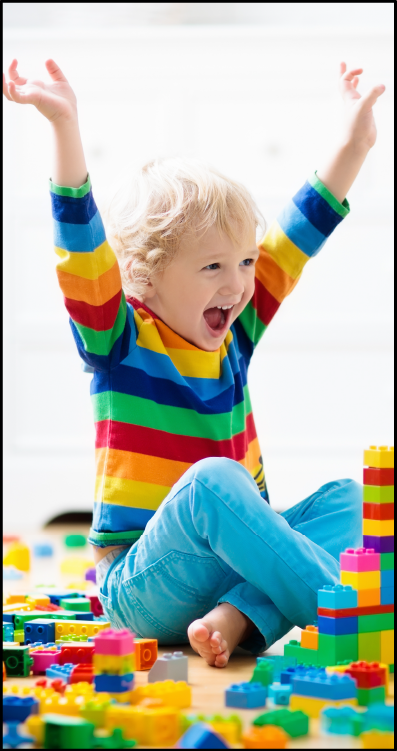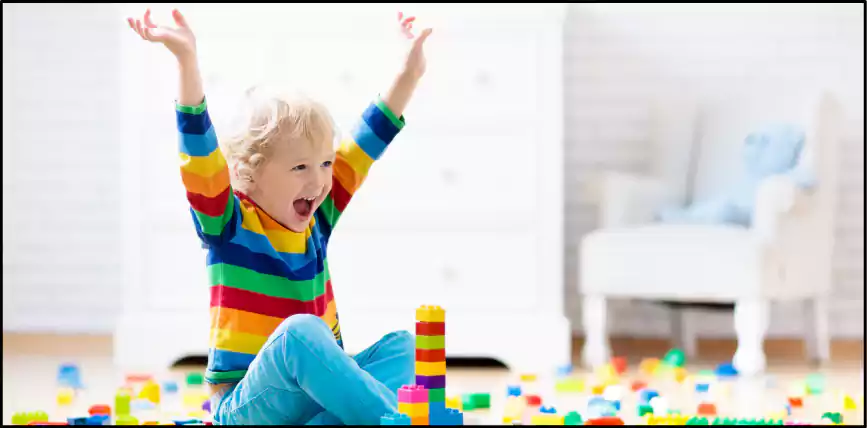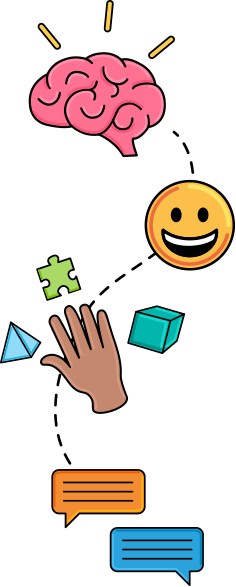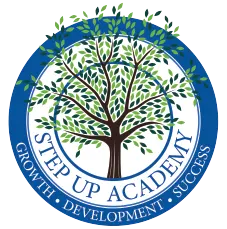Engaging Your PreSchool to
Grade 2 Children in:
The Big Jump from
Kindergarten to Grade 1
The transition from Kindergarten to Grade 1 is felt by all children and families. Many families come to us
with concerns about their Grade 1 and 2 child’s progress or lack of, the challenges they experience when
reading, and so on.
Take a look at the chart below to explore some of the challenges young children
face when transitioning from Kindergarten to Grade 1:
The difference between kindergarten & Grade 1
Grade 1 and onwards is more academic than the play-based learning approach in Kindergarten.
Children are expected to be more independent in Grade 1 and onwards.
In Grade 1 in many cases children are expected to know how to read.
There is more of a focus on writing in Grade 1 as opposed to Kindergarten.
By Grade 1 children are expected to have a grasp of basic numeracy – in many cases, addition and subtraction.
In Grade 1 children are expected to comprehend reading at a higher level than in Kindergarten.
ARISING
CHALLENGES FOR
YOUR
CHILD
Although very engaging, the play-based model in Kindergarten does not set children up for a more Academic Grade 1 class.
Usually with fewer adults in the room by Grade 1, children are expected to do more work on their own vs. with more personalized supervision.
Alphabets are taught, however a higher level of phonetic fluency is needed and might not be explicitly taught in Kindergarten.
In some cases, children go into Grade 1 not even knowing how to hold a pencil.
Children who struggle with math early on may be at risk for math anxiety or perceive it as not “their subject.”
Even though many children can read, they may not understand what they are reading. This is a much-needed skills in Grade 1.
We hear you. We see your challenges.
Scarborough | Ajax | Oshawa — Personalized Learning, Your Way.
Flexible In-person and Online Tutoring
Set Up a Free Assessment Now!
We’re here to help.
Did You Know?


Ages 2 to 7 are Crucial Years for Your Child’s Brain Development.
Throughout these ages, children develop by:
 Becoming physically stronger and developing more dexterity (i.e. holding different objects,
etc.).
Becoming physically stronger and developing more dexterity (i.e. holding different objects,
etc.).
 Learning letters, colors, counting and other foundational content for future years.
Learning letters, colors, counting and other foundational content for future years.
 Learning how to understand and manage their feelings. By age 5, friends become
important.
Learning how to understand and manage their feelings. By age 5, friends become
important.
 Learning an average of 50 words by age 2 and thousands of words by age 5 – enough to
tellstories and carry on conversations.
Learning an average of 50 words by age 2 and thousands of words by age 5 – enough to
tellstories and carry on conversations.
 Learning an average of 50 words by age 2 and thousands of words by age 5 – enough to
tellstories and carry on conversations.
Learning an average of 50 words by age 2 and thousands of words by age 5 – enough to
tellstories and carry on conversations.
 Learning to read and write.
Learning to read and write.
 Composing sentences with 5 for more words.
Composing sentences with 5 for more words.
 Performing simple addition and subtraction.
Performing simple addition and subtraction.
 Understanding concepts of space and time.
Understanding concepts of space and time.
 Distinguishing fantasy from reality.
Distinguishing fantasy from reality.
This is How We Set Your Young Child
Up for Success


- Teachers who are certified and trained in Kindergarten tutoring and Elementary Education.
- Custom-Developed Lessons for every class to engage your child in responsive and relevant learning.
- The ability for students to see their teacher on the screen.
- A pencil and paper method with no need for students to type or use their device.
- A range of activities based on multimedia tools to engage learners.
- Social interaction and collaboration with peers to build communication skills.
- Rich, engaging learning beyond worksheets or a transmissive model.
Take a
Peek at the
Engagement and Fun in
one of our Early
Learners Classes!
Scarborough | Ajax | Oshawa — Personalized Learning, Your Way.
Flexible In-person and Online Tutoring
BOok a Call for more information!

How We Help Your Child Build a
Strong Foundations
Numeracy skills
are built with
the
following
strategies:
 Using pictures
Using pictures
 Virtual manipulatives
Virtual manipulatives
 Student writing out their answers
Student writing out their answers
 Word problems
Word problems
 Math challenges
Math challenges
 Math games
Math games
 Short videos
Short videos
 Collaborative learning
Collaborative learning
 Discussing strategies with the other students to build the strategies for all the
students
Discussing strategies with the other students to build the strategies for all the
students
Literacy skills
are BUILT WITH
THE
FOLLOWING
STRATEGIES:
 Journal writing
Journal writing
 Read alouds
Read alouds
 Digital stories
Digital stories
 Rhyming games
Rhyming games
 Literacy-based games
Literacy-based games
 Sight word learning
Sight word learning
 Reading strategies
Reading strategies
 Reading comprehension strategies
Reading comprehension strategies
 Sentence writing
Sentence writing
 Short videos
Short videos
 Collaborative learning
Collaborative learning
The ELP Classroom is a dynamic space that changes to accommodate the different learners and engage them in education. Our teachers are always looking to understand their students’ interests, needs and goals to ensure that every class is relevant and purposeful.
Class Structure
- Classes are 2 times each week – usually Tuesday & Thursday or Monday & Wednesday.
- Each class is 90 minutes (1 hour and 30 minutes) in length.

Set Up a Free Assessment Now!

- Classes are 2 times each week – usually Tuesday & Thursday or Monday & Wednesday.
- CEach class is 90 minutes (1 hour and 30 minutes) in length.



